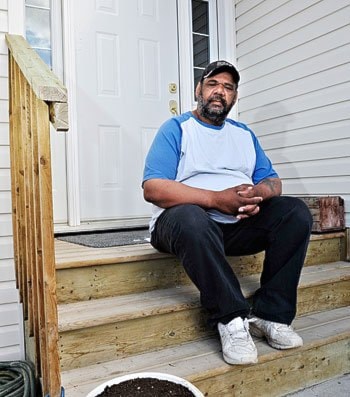A flood can cause a lot of problems.
In its wake it can shift a building’s foundation, turn insulation and drywall to mush, and leave a veritable collage of mould behind.
In short, floods create a lot of damage.
Last summer, as you probably well remember, teams of Yukoners grabbed shovels and sandbags to help Marsh Lake, Tagish, Carcross and Lake Laberge residents protect themselves against Mother Nature’s rising tide.
The efforts were grand, but the water kept coming and many properties were left with flood damage.
At the peak of the flood, Premier Dennis Fentie announced the federal government had determined much of the Southern Lakes region qualified as a disaster area and many homes were eligible for funding.
Residential property owners in flood-affected areas could apply for a grant to cover property damage caused by the flood.
Under the program, Yukon Housing will also provide recreational-property owners with interest-free loans for up to $35,000, to be paid back over 12 years.
The whole relief program is being overseen by the Yukon Housing Corporation.
So far, Yukon Housing has received more than 50 applications, said Marc Perreault, the organization’s director of program delivery.
“So far, we’ve had 57 applications of which 45 are principal residence,” he said.
“Thus far we’ve advanced $250,000 for repairs; that’s been to mitigate mould and flood damage.”
While most applications have been from Marsh Lake residents, Yukon Housing has also received seven from Tagish, nine from Upper Liard, one from Carcross and two from Lake Laberge, said Perreault.
“We’re expecting a couple more this summer,” he said, adding that the program does not yet have a “sunset clause” for applications.
The program was a one-time deal and does not apply to future floods, if any, he added.
To combat future flooding, the government has started studying affected areas to determine how to combat high water levels in the future, said Doug Caldwell, a Community Services spokesman.
A $119,000 contract has been awarded to EBA Engineering to assess the flood-damaged areas and draft options to combat future occurrences, he said.
Ottawa provides a variety of disaster-relief packages for Canadians, according to the Public Safety Canada’s website.
Disaster Financial Assistance Arrangements vary, according to its website.
“In the event of a large natural disaster, the government of Canada provides financial assistance to provincial and territorial government …” states Public Safety Canada, the agency that administers the program.
“When response and recovery costs exceed what individual provinces or territories could reasonably be expected to bear on their own, the DFAA are used by the government of Canada to ensure fair and equitable federal financial assistance.
“Through the DFAA, assistance is paid to the province or territory — not directed to affected individuals, small businesses or communities.
“Since the inception of the program in 1970, the government of Canada has paid more than $1.8 billion in post-disaster assistance to help provinces and territories with the costs of response and of returning infrastructure and personal property to pre-disaster condition.”
The program covers a variety of disaster-related expenses, including evacuation operations, the restoration of public works and infrastructure, as well as the replacement or repair of basic, essential personal property of individuals, small businesses and farmsteads, according to Public Works Canada.
Expenses not eligible under the program include repairs to non-primary dwelling units (such as cottages), repairs that are covered by insurance, assistance to large businesses and Crown corporations, and assistance requested due to forest fires.
